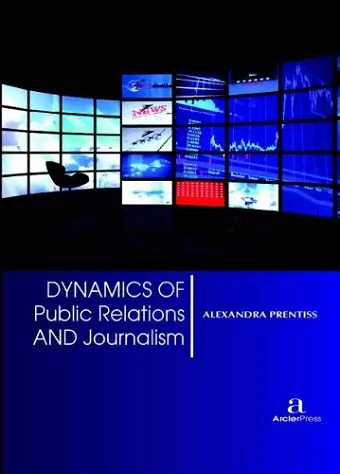Dynamics of Public Relations and Journalism
Format:Hardback
Publisher:Arcler Education Inc
Published:30th Nov '16
Should be back in stock very soon

Public relations is essentially journalism on a corporate scale. It shares some of the same attributes, but few of the same motivations. Whereas public relations professionals once relied upon journalism to circulate information about the companies for which they work, new technologies like social media and PR websites have enabled them to bypass journalists altogether in reaching the public.
We often think of public relations as the management of corporate communication strategies, and as such can be cast in a negative light, as a manipulation tactic designed for commercial gain. However, public relations also serves as an agent of positive change and can spread awareness of important issues; non-profits, governments, and other entities not commercially motivated also use public relations. In this book we will examine the changes that public relations is undergoing as a result of digital innovations - how public relations practitioners and journalists are dealing with this shift.
The first part of this book will concentrate on the traditional relationship between public relations and journalism, in which PR professionals feed information to journalists, who then report it. How do journalists feel about public relations? “Perception of Journalists on the Role of Public Relations” looks at the ambivalent feelings journalists harbor for public relations. Journalists have their conflicted feelings for public relations professionals, and vice versa. The shifting dynamics in this relationship are investigated in “Do Public Relations and Journalism’s Converging Roles Affect How They Perceive Each Other?”
“The Relationship between Journalists and PR Practitioners in Romania” maintains that there is an inherent conflict or bias in this relationship, in which journalists feel as though they are told a version of events that is not necessarily truthful. “The Synergy between Mass-Media and Public Management” posits that crises occur because of misunderstandings between public sector communications departments and the media; the author believes that communications departments and public relations should determine the information disseminated, while the media is just a vehicle.
While public relations is often dismissed as “spin”, “Public Relations and Religious Diversity” argues that it can have a positive effect on increasing religious tolerance. “The Myth of the `Gagged Clam’” offers an interesting case study of how a politician with a background in journalism was able to be...
ISBN: 9781680945119
Dimensions: unknown
Weight: unknown
320 pages